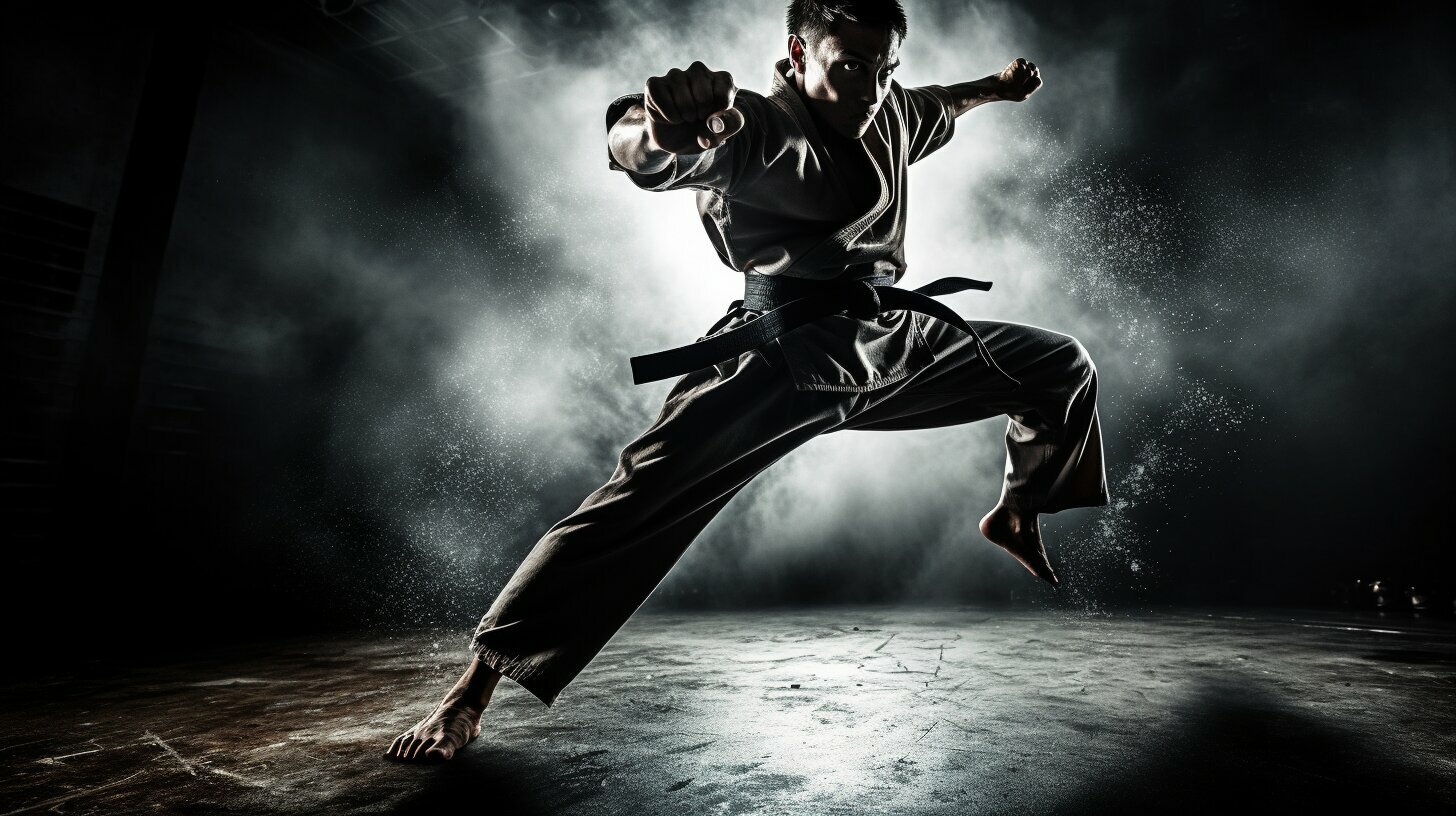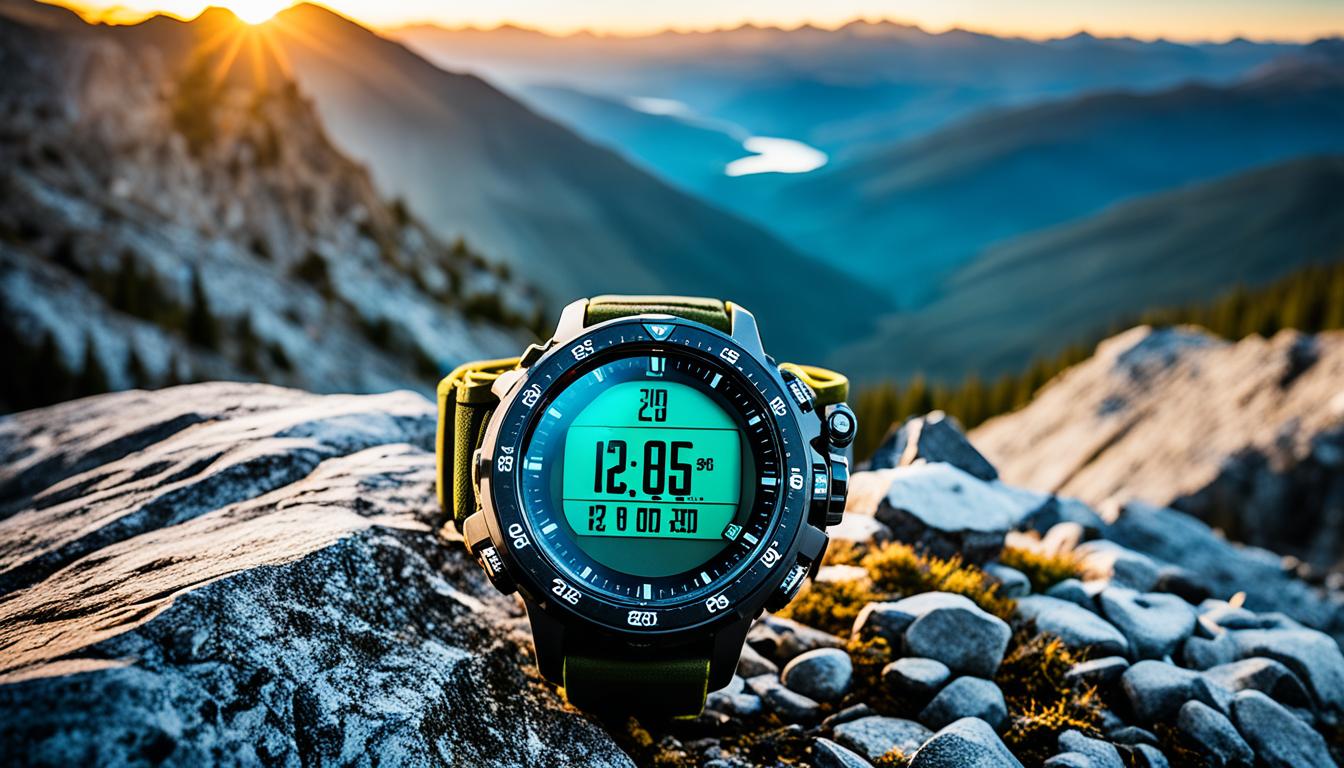When it comes to personal safety, knowing self-defense techniques can be vital in any situation. Whether you’re walking alone at night, traveling to unfamiliar places, or simply want to feel more confident, mastering these techniques can help you stay safe and secure.
In this section, we will explore the top self-defense techniques that are essential for survival. These techniques will equip you with the skills necessary to protect yourself and stay safe in any situation. It’s crucial to learn and practice these self-defense techniques to ensure your personal safety.
Disclosure: When you buy through links on our site, we may earn an affiliate commission.
- Knowing self-defense techniques can be vital in any situation.
- Mastering self-defense techniques can help you stay safe and secure.
- Learn and practice these techniques to ensure your personal safety.
- Self-defense techniques are essential for survival.
- Stay safe and secure with these top self-defense techniques.
Understanding Self-Defense: What You Need to Know
Before delving into the top self-defense techniques, it’s crucial to have a solid understanding of what self-defense entails. To effectively defend yourself, you need to have the right mindset, situational awareness, and physical fitness.
Self-defense is not just about learning how to punch or kick. It’s about understanding your surroundings, identifying potential threats, and being mentally and physically prepared to respond to those threats.
Developing a strong mindset is critical in self-defense. This means being aware of your surroundings, trusting your instincts, and being mentally prepared for any situation. Situational awareness involves being aware of potential dangers, such as dark alleys or deserted streets, and avoiding them whenever possible.
In addition, physical fitness is a crucial aspect of self-defense. A well-conditioned body can help you react faster, move more efficiently, and defend yourself more effectively.
By understanding these fundamental concepts of self-defense, you can better prepare yourself to apply the top self-defense techniques effectively.

“Self-defense is not just about learning how to punch or kick. It’s about understanding your surroundings, identifying potential threats, and being mentally and physically prepared to respond to those threats.”
Striking Techniques: Effective Moves for Self-Defense
When it comes to self-defense, striking techniques are essential for protecting yourself. By learning the best self-defense moves, you can defend against an attacker and increase your chances of survival. Whether you’re facing a dangerous situation on the street or at home, understanding the essential self-defense techniques can make all the difference.
The most effective strikes in self-defense include punches, kicks, and knee strikes. These moves are designed to generate power and target vulnerable areas on an attacker’s body. By mastering these best self-defense moves, you can deliver a decisive blow to your attacker and create an opportunity to escape.
It’s important to note that self-defense strategies go beyond just physical moves. As with any essential self-defense techniques, understanding self-defense strategies can help you stay safe in any situation. By practicing situational awareness and learning to identify potential threats, you can avoid dangerous situations altogether.
By combining these self-defense strategies with the best self-defense moves, you’ll be better prepared to protect yourself in any situation. Remember to stay calm, focused, and alert in self-defense situations. With practice, these advanced self-defense techniques will become second nature, and you can stay safe and prepared for anything.

“Mastering self-defense techniques not only prepares you to protect yourself from potential danger, it also gives you more confidence and peace of mind in your daily life.”
Grappling Techniques: Controlling an Attacker
Grappling techniques are essential self-defense moves that enable you to gain control over an attacker. By learning these advanced self-defense techniques, you can neutralize your attacker and create an opportunity for escape.
Joint locks are one of the most effective grappling techniques that you can use in self-defense situations. They involve twisting or bending your attacker’s joints in unnatural ways, causing them to experience pain and lose mobility. Joint locks can be applied to various parts of the body, such as the elbow, wrist, and knee.
Takedowns are another important grappling technique that can help you gain control over an attacker. They involve using leverage and momentum to bring your attacker to the ground, giving you the upper hand. However, it’s crucial to ensure that you maintain control throughout the takedown to prevent your attacker from counterattacking.
Submission techniques are also highly effective grappling moves that can be used to incapacitate an attacker. They involve applying pressure to sensitive areas of the body, such as the neck or shoulder, causing your attacker to submit. These techniques require advanced self-defense skills and should only be used in extreme situations.
To perform these essential self-defense techniques effectively, it’s crucial to have a solid understanding of body mechanics and leverage. Practice with a partner to develop proper technique and improve your timing. Remember, these advanced self-defense moves should only be used as a last resort when other techniques have failed.

Mastering grappling techniques is a crucial component of your self-defense arsenal. These techniques allow you to control an attacker and create an opportunity for escape. Remember to practice regularly and only use these advanced self-defense techniques when necessary.
Defense Against Weapons: Protecting Yourself in Dangerous Situations
While it’s always important to know how to defend yourself, situations can arise where an attacker is armed, making your knowledge of self-defense techniques even more critical. In these extreme scenarios, your survival may depend on how you protect yourself against weapons like knives, firearms, or blunt objects.
When faced with an armed attacker, your first course of action should always be to try and escape the situation. However, if escape is not possible, you’ll need to be prepared to defend yourself.
One of the most effective self-defense techniques against an armed attacker is to use distance and evasion to your advantage. This means staying out of the attacker’s reach, moving quickly and unpredictably, and using objects in your environment to protect yourself if possible.
Additionally, learning disarmament techniques can be helpful in these emergency situations. The goal of disarmament techniques is to take control of the weapon and incapacitate the attacker. Some effective disarmament techniques include wrist locks, joint locks, and take-downs.
Remember, defending yourself against armed attackers is extremely dangerous and should only be attempted as a last resort. Your safety should always be your top priority, so it’s important to have a plan of action in place for these types of emergency situations.

“When faced with an armed attacker, your first course of action should always be to try and escape the situation.”
Ground Defense: Techniques for Self-Defense on the Ground
When defending yourself, it’s not uncommon to find yourself on the ground. Knowing how to defend yourself in this position is crucial, and there are several advanced self-defense techniques you can use to gain the advantage.
One of the best self-defense moves to use on the ground is the bridge and roll technique. This move involves bridging your hips off the ground and rolling your body to one side, using your momentum to get back onto your feet. This move is especially effective if your attacker is on top of you.
Another essential ground defense technique is the guard position. This involves wrapping your legs around your attacker’s waist and trapping their arms using your own. This move is especially useful in situations where your attacker is trying to strike you while on top.
Advanced self-defense techniques such as the armbar and triangle choke are also effective in ground scenarios. These moves involve manipulating your attacker’s joints and limbs, creating leverage to gain control and force them to submit.

When practicing ground defense techniques, it’s important to use mats or another soft surface to avoid injury. It’s also essential to train with a partner who is experienced in ground techniques and who can provide feedback on your form and technique.
By mastering these best self-defense moves and incorporating them into your training, you can effectively defend yourself in ground scenarios and increase your chances of survival.
Multiple Attackers: Strategies for Self-Defense in Group Scenarios
Being faced with multiple attackers can be a daunting and dangerous situation. It’s important to have a strategy in place to increase your chances of survival. The following self-defense strategies can help:
- Situational awareness: When in a group scenario, it’s crucial to be aware of your surroundings and identify any potential threats. Keep an eye out for suspicious behavior or anyone who is behaving aggressively.
- Target prioritization: In the event that you are faced with multiple attackers, it’s essential to prioritize who to defend yourself against first. Identify the most significant threats and focus your self-defense efforts on neutralizing them.
- Effective evasion tactics: Self-defense against multiple attackers often requires evasion and escape. This could involve moving away from the attackers, using obstacles to your advantage, and creating distance to buy time for a safe escape.
It’s important to note that these strategies may vary depending on the specific situation. When facing multiple attackers, there is no one-size-fits-all solution. The key is to remain calm, think clearly, and adapt your strategy to the situation at hand.
Remember that prevention is always the best defense. Avoiding high-risk areas and situations reduces the likelihood of encountering multiple attackers. However, if you do find yourself in a group scenario, the above strategies can help increase your chances of survival.

Always remember that self-defense should be a last resort. Whenever possible, try to avoid confrontation and escape the situation safely.
Psychological Self-Defense: Protecting Your Mind in High-Stress Situations
Self-defense is not just about physical techniques; it also involves mental and emotional preparation. High-stress situations can affect your ability to make sound decisions. To protect your mind and enhance your survival skills, it’s essential to incorporate psychological self-defense in your training.
One of the critical components of psychological self-defense is developing a strong mindset. Your mindset determines your reaction to a threatening situation. It’s essential to train your mind to stay calm and think logically, even in high-pressure scenarios. By visualizing potential threats and mentally preparing for them, you can overcome fear and anxiety and react proactively to protect yourself.
Another aspect of psychological self-defense is verbal de-escalation techniques. Communicating effectively with an attacker can prevent a situation from escalating. These techniques can include active listening, empathizing with the attacker, and using calm and assertive language to defuse the situation. By utilizing these techniques, you can potentially avoid physical confrontation altogether.
Additionally, maintaining physical fitness and overall wellness can enhance your psychological resilience. A healthy mind and body are more adept at handling stress and adapting to unexpected situations.

By incorporating psychological self-defense into your training, you will be better equipped to handle high-stress situations and protect yourself effectively. Remember, self-defense involves a combination of physical and mental techniques, so it’s essential to prioritize both aspects in your training.
Self-Defense Training: How to Prepare and Practice
Now that you have learned about the top self-defense techniques for survival, it is time to prepare and practice. To effectively master these skills, consistent training is key. Here are some tips to help you prepare and practice:
- Find a reputable self-defense instructor or school: Look for an instructor or school with experience and positive reviews. Research their background and certifications to ensure they are qualified to teach self-defense techniques.
- Incorporate realistic scenarios: Practice your techniques in simulated real-life scenarios to better prepare yourself for potential dangers. This will help you remain calm and react quickly in high-stress situations.
- Regularly train: Consistently practice your techniques to maintain muscle memory and build confidence in your abilities. Aim to train at least twice a week to keep your skills up-to-date.
- Join a self-defense training group: Look for local self-defense training groups or clubs to train with like-minded individuals. It’s a great way to practice with others and exchange techniques and knowledge.
Remember, the goal of self-defense is to stay safe and protect yourself in a dangerous situation. By regularly training and practicing these techniques, you can improve your survival skills and be better equipped to defend yourself effectively. Make self-defense training a priority and continue to refine your skills.

While self-defense techniques are the foundation of personal safety, having the right self-defense equipment can provide an additional layer of protection. Here are some effective self-defense tools to consider:
| Self-Defense Tool | Features |
|---|---|
| Pepper Spray | Small, easy to carry, and can temporarily disable an attacker by causing eye, nose, and throat irritation. |
| Personal Alarm | A loud sound that can deter attackers and alert people nearby of your distress. Some alarms also have a flashing light for added visibility. |
| Tactical Flashlight | A small, high-intensity flashlight that can temporarily blind an attacker and serve as a striking tool. |
When choosing self-defense equipment, be sure to consider factors such as size, weight, and ease of use. It’s important to practice using the equipment regularly so that you feel comfortable and confident in using it when the need arises.

Remember, self-defense equipment should never be your sole means of protection. It’s crucial to have a solid foundation of self-defense techniques and strategies in addition to any equipment you may carry. By combining effective self-defense techniques with the right self-defense equipment, you can enhance your personal safety and be better prepared for any situation.
Conclusion
Now that you have explored the top self-defense techniques for survival, it’s time to prioritize your personal safety by mastering these essential skills. Remember, self-defense is a lifelong journey, and consistent practice is key to maintaining your skills and confidence.
Start by understanding the fundamentals of self-defense, from mindset to situational awareness and physical fitness. From there, you can learn and practice striking and grappling techniques, defense against weapons, ground defense, and strategies for multiple attackers.
Don’t forget the importance of psychological self-defense, including mental and emotional preparation and verbal de-escalation techniques. And don’t overlook the benefits of regular training and the use of self-defense equipment.
By incorporating these techniques and strategies into your life, you will be equipped with the knowledge and skills necessary to protect yourself in any situation. Stay safe and start your self-defense journey today!
FAQ
Q: What are the top self-defense techniques for survival?
A: The top self-defense techniques for survival include striking techniques, grappling techniques, defense against weapons, ground defense, and strategies for dealing with multiple attackers.
Q: What is the importance of understanding self-defense?
A: Understanding self-defense provides you with the necessary mindset, situational awareness, and physical fitness to effectively apply self-defense techniques in real-life situations.
Q: What are some effective striking techniques for self-defense?
A: Some effective striking techniques for self-defense include punches, kicks, and knee strikes, aimed at vulnerable areas of an attacker’s body.
Q: What are grappling techniques and how can they help in self-defense?
A: Grappling techniques involve joint locks, takedowns, and submission techniques that can help you gain control over an attacker in close-quarters encounters.
Q: How can I defend myself against armed attackers?
A: To defend yourself against armed attackers, you need to learn self-defense techniques specifically designed to deal with weapons such as knives, firearms, and blunt objects.
Q: What should I do if a self-defense situation ends up on the ground?
A: In a ground defense situation, you need to know techniques for escaping, sweeping, and submitting your attacker to regain control of the situation.
Q: How can I defend myself in scenarios with multiple attackers?
A: Strategies for defending yourself in group scenarios include situational awareness, target prioritization, and effective evasion tactics.
Q: How can psychological self-defense protect me in high-stress situations?
A: Psychological self-defense involves mental and emotional preparation, developing a strong mindset, and utilizing verbal de-escalation techniques to handle high-stress situations.
Q: How can I prepare and practice self-defense?
A: To prepare and practice self-defense, it’s important to engage in regular training, find a reputable instructor or school, and incorporate realistic scenarios into your training sessions.
Q: What self-defense equipment can enhance my safety?
A: Self-defense equipment such as pepper spray, personal alarms, and tactical flashlights can provide an extra layer of protection and enhance your personal safety.




